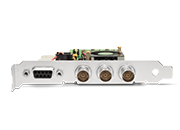- The PCI-7432 64-CH Isolated Digital I/O Cards Responding to the industrys need for high-density digital input/output modules, the ADLINK PCI-744X DIO card series delivers to 128 opto-isolated channels for a wide range of demanding PCI-based applications.
- The bulk of the book gives full details of tried and tested hands-on projects, such as the 12C BUS, USB BUS, CAN BUS, SPI BUS and real-time operating systems. Categories: Technique Electronics: Microprocessor Technology.
- Download Aja Usb Modules Interconnect (com12) Driver Download
- Download Aja Usb Modules Interconnect (com12) Driver Windows 7
- Download Aja Usb Modules Interconnect (com12) Drivers
The USB module includes a 2-port USB host controller that is revision 2.0-compatible, based on the OHCI specification for USB, release 1.0. The USB module also includes a USB device controller compatible with the USB specification revision 2.0 and USB specification revision 1.1. The I2C module is a multimaster communication module providing an.
26 drivers total Last updated: Oct 19th 2020, 13:28 GMT RSS Feed
sort by:
ASUS VivoBook X540LA Atheros Bluetooth Driver 10.0.3.19 for Windows 10 64-bit
3,370downloads
ASUS K401UB BIOS Flash Utility 3.0.1
27,315downloads
ASUS BP1AF Atheros BlueTooth Driver 8.0.1.314
40,509downloads
ASUS E2KM1I-DELUXE Bluetooth Driver 5.100.82.112/6.30.59.82
6,297downloads
ASUS E2KM1I-DELUXE Bluetooth Driver 5.100.82.112/6.31.223.1
2,340downloads
ASUS USB-BT400 Bluetooth Controller Driver 12.0.0.7620 for Windows 8.1 64-bit
16,264downloads
ASUS USB-BT400 Bluetooth Controller Driver 12.0.0.7620 for Windows 8.1
10,904downloads
 Aug 28th 2013, 14:49 GMT
Aug 28th 2013, 14:49 GMTASUS USB-BT400 Bluetooth Controller Driver 12.0.0.7030 for Windows 8 64-bit
4,217downloads

ASUS USB-BT400 Bluetooth Controller Driver 12.0.0.7030 for Windows 8
3,795downloads

ASUS Bluetooth Adapter Driver 1.0.2.0 64-bit
15,911downloads
ASUS Bluetooth Adapter Driver 1.0.2.0
9,602downloads
ASUS Bluetooth v2.1 USB Adapter Driver 1.0.2.0 64-bit
3,612downloads
ASUS Bluetooth v2.1 USB Adapter Driver 1.0.2.0
2,840downloads
ASUS Bluetooth v2.1 USB Adapter Driver 1.0.3.0 64-bit
5,820downloads
ASUS Bluetooth v2.1 USB Adapter Driver 1.0.3.0
3,800downloads
Atheros ASUS Bluetooth Driver 1.0.3.0 64-bit
4,350downloads
Atheros ASUS Bluetooth Driver 1.0.3.0
4,253downloads
Atheros ASUS Bluetooth Driver 1.0.3.0 for Window 8 64-bit
5,937downloads
Atheros ASUS Bluetooth Driver 1.0.3.0 for Window 8
1,244downloads
ASUS Bluetooth v2.1 USB Adapter Driver 1.0.3.0 for Windows 8 x64
1,033downloads
ASUS Bluetooth v2.1 USB Adapter Driver 1.0.3.0 for Windows 8
865downloads
Asus Maximus V Formula Bluetooth Driver 6.5.1.2700 Beta for Windows 8
2,426downloads
ASUS Maximus V Formula Broadcom Bluetooth Driver 5.6.0.7600/6.5.0.3200 for XP/Windows 7
9,035downloads
Asus Maximus V Formula/ThunderFX Bluetooth Driver 6.5.1.2700 for Windows 8
1,855downloads
Asus Maximus V Formula/ThunderFX Bluetooth Driver 5.6.0.7600/ 6.5.0.320 for XP/ Windows 7
6,633downloads
Update 2017-11-01: Here’s a newer tutorial on creating a custom IP with AXI-Streaming interfaces
Tutorial Overview
In this tutorial we’ll create a custom AXI IP block in Vivado and modify its functionality by integrating custom VHDL code. We’ll be using the Zynq SoC and the MicroZed as a hardware platform. For simplicity, our custom IP will be a multiplier which our processor will be able to access through register reads and writes over an AXI bus.
The multiplier takes in two 16 bit unsigned inputs and outputs one 32 bit unsigned output. A single 32 bit write to the IP will contain the two 16 bit inputs, separated by the lower and higher 16 bits. A single 32 bit read from the peripheral will contain the result from the multiplication of the two 16 bit inputs. The design doesn’t serve much purpose, but it is a good example of integrating your own code into an AXI IP block.
Requirements
Before following this tutorial, you will need to do the following:
- Vivado 2014.2
- Platform Cable USB II (or equivalent JTAG programmer)
Start from a base project
You can do this tutorial with any existing Vivado project, but I’ll start with the base system project for the MicroZed that you can access here:
Create the Custom IP
- With the base Vivado project opened, from the menu select Tools->Create and package IP.
- The Create and Package IP wizard opens. If you are used to the ISE/EDK tools you can think of this as being similar to the Create/Import Peripheral wizard. Click “Next”.
- On the next page, select “Create a new AXI4 peripheral”. Click “Next”.
- Now you can give the peripheral an appropriate name, description and location. Click “Next”.
- On the next page we can configure the AXI bus interface. For the multiplier we’ll use AXI lite, and it’ll be a slave to the PS, so we’ll stick with the default values.
- On the last page, select “Edit IP” and click “Finish”. Another Vivado window will open which will allow you to modify the peripheral that we just created.
At this point, the peripheral that has been generated by Vivado is an AXI lite slave that contains 4 x 32 bit read/write registers. We want to add our multiplier code to the IP and modify it so that one of the registers connects to the multiplier inputs and another to the multiplier output.
Add the multiplier code to the peripheral
You can find the multiplier code on Github at the link below. Download the “multiplier.vhd” file and save it somewhere, the location is not important for now.
Note that these steps must be done in the Vivado window that contains the peripheral we just created (not the base project).
- From the Flow Navigator, click “Add Sources”.
- In the window that appears, select “Add or Create Design Sources” and click “Next”.
- On the next window, click “Add Files”.
- Browse to the “multiplier.vhd” file, select it and click “OK”.
- Make sure you tick “Copy sources into IP directory” and then click “Finish”.
The multiplier code is now added to the peripheral, however we still have to instantiate it and connect it to the registers.
Modify the Peripheral
At this point, your Project Manager Sources window should look like the following:
- Open the branch “my_multiplier_v1_0 – arch_imp”.
- Double click on the “my_multiplier_v1_0_S00_AXI_inst” file to open it.
- The source file should be open in Vivado. Find the line with the “begin” keyword and add the following code just above it to declare the multiplier and the output signal:
- Now find the line that says “– Add user logic here” and add the following code below it to instantiate the multiplier:
- Find this line of code “reg_data_out <= slv_reg1;” and replace it with “reg_data_out <= multiplier_out;”.
- In the process statement just a few lines above, replace “slv_reg1” with “multiplier_out”.
- Save the file.
- You should notice that the “multiplier.vhd” file has been integrated into the hierarchy because we have instantiated it from within the peripheral.
- Click on “IP File Groups” in the Package IP tab of the Project Manager.
- Click the “Merge changes from IP File Group Wizard” link.
- The “IP File Groups” should now have a tick.
- Now click “Review and Package IP”.
- Now click “Re-package IP”.
The peripheral will be packaged and the Vivado window for the peripheral should be automatically closed. We should now be able to find our IP in the IP catalog. Now the rest of this tutorial will be done from the original Vivado window.
Download Aja Usb Modules Interconnect (com12) Driver Download
Add the IP to the design
- Click the “Add IP” icon.
- Find the “my_multiplier” IP and double click it.
- The block should appear in the block diagram and you should see the message “Designer Assistance available. Run Connection Automation”. Click the connection automation link.
- Click the “my_multiplier_0” peripheral from the drop-down menu.
- In the window that appears, set Clock connection to “Auto” and click “OK”.
- The new block diagram should look like this:
- Generate the bitstream.
- When the bitstream is generated, select “Open the implemented design” and click “OK”.
Export the hardware design to SDK
Once the bitstream has been generated, we can export our design to SDK where we can then write code for the PS. The PS is going to write data to our multiplier and read back the result.
- In Vivado, from the File menu, select “Export->Export hardware”.
- In the window that appears, tick “Include bitstream” and click “OK”.
- Again from the File menu, select “Launch SDK”.
- In the window that appears, use the following settings and click “OK”.
At this point, the SDK loads and a hardware platform specification will be created for your design. You should be able to see the hardware specification in the Project Explorer of SDK as shown in the image below.
You are now ready to create a software application to run on the PS.
Create a Software application
At this point, your SDK window should look somewhat like this:
To make things easy for us, we’ll use the template for the hello world application and then modify it to test the multiplier.
- From the File menu, select New->Application Project.
- In the first page of the New Project wizard, choose a name for the application. I’ve chosen
hello_world. Click “Next”. - On the templates page, select the “Hello World” template and click “Finish”.
- The SDK will generate a new application which you should find in the Project Explorer as in the image below.
The hello_world folder contains the Hello World software application, which we will modify to test our multiplier.
Modify the Software Application
Now all we need to do is modify the software application to test our multiplier peripheral.
- From the Project Explorer, open the
hello_world/srcfolder. Open the “helloworld.c” source file. - Replace all the code in this file with the following.
Save and close the file.
Test the design on the hardware
To test the design, we are using the MicroZed board from Avnet. Make the following setup before continuing:
- On the MicroZed, set the JP1, JP2 and JP3 jumpers all to the 1-2 position.
- Connect the USB-UART (J2) to a USB port of your PC.
- Connect a Platform Cable USB II programmer (or similar device) to the JTAG connector. Connect the programmer to a USB port of your PC.
Now you need to open up a terminal program on your PC and set it up to receive the test messages. I use Miniterm because I’m a Python fan, but you could use any other terminal program such as Putty. Use the following settings:
- Comport - check your device manager to find out what comport the MicroZed popped up as. In my case, it was COM12 as shown below.
- Baud rate: 115200bps
- Data: 8 bits
- Parity: None
- Stop bits: 1
Now that your PC is ready to receive the test messages, we are ready to send our bitstream and software application to the hardware.
- In the SDK, from the menu, select Xilinx Tools->Program FPGA.
- In the Program FPGA window, we select the hardware platform to program. We have only one hardware platform, so click “Program”.
- The bitstream will be loaded onto the Zynq and we are ready to load the software application. Select the
hello_worldfolder in the Project Explorer, then from the menu, select Run->Run. - In the Run As window, select “Launch on Hardware (GDB)” and click “OK”.
- The application will be loaded on the Zynq PS and it will be executed. Look out for the results in your terminal window!
Download Aja Usb Modules Interconnect (com12) Driver Windows 7
We’re sending two 16-bit inputs 0x02 and 0x03 and the result is 0x06 as expected.
Source code
The TCL build script and source code for this project is shared on Github here:
For instructions on rebuilding the project from sources, read my post on version control for Vivado projects.
Download Aja Usb Modules Interconnect (com12) Drivers
See also
